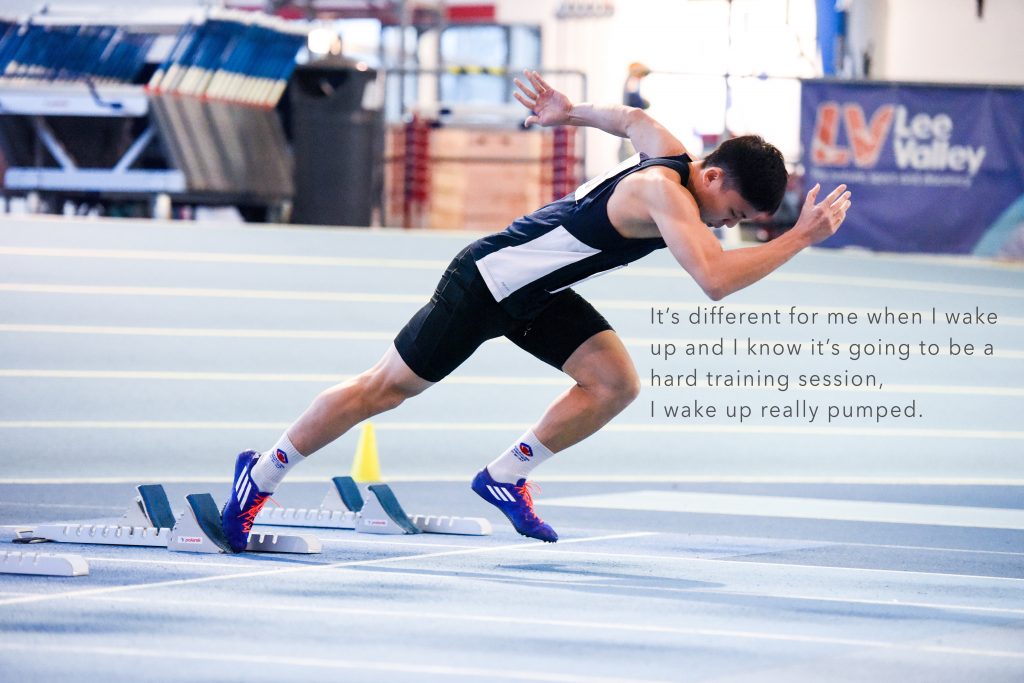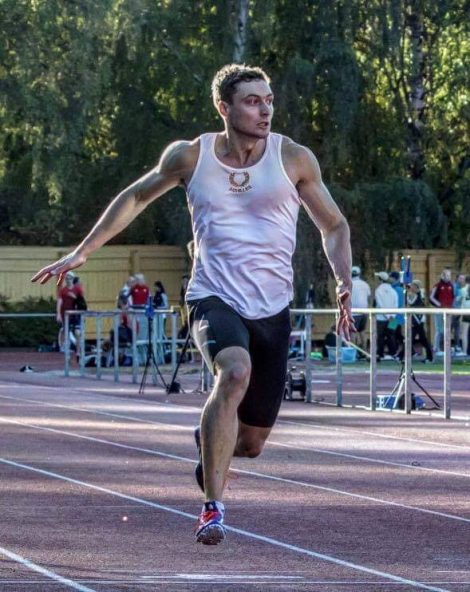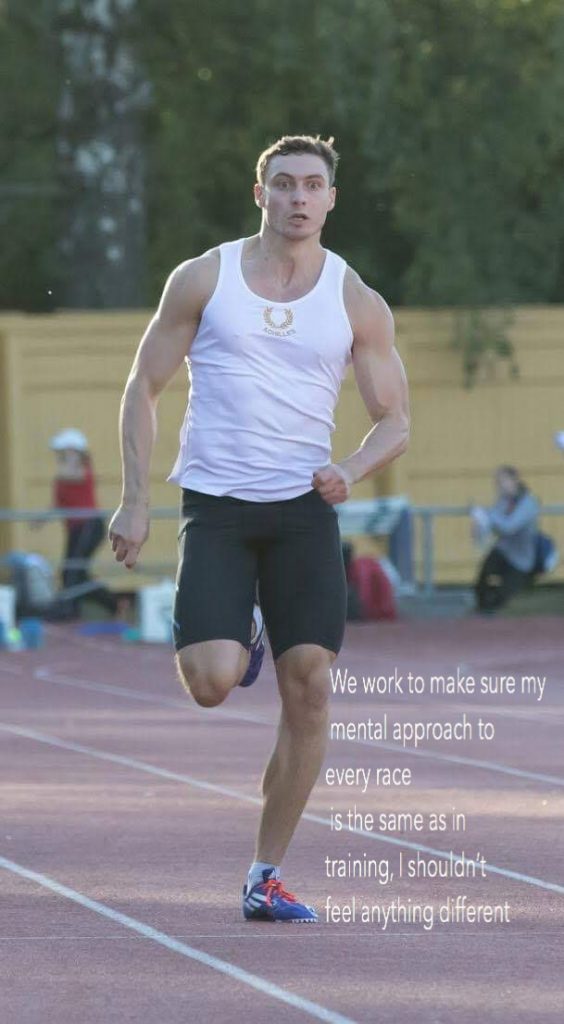The Indoor Varsity Match is the athletic highlight of Hillary term and the last event before OUAC prepare for the oncoming outdoor season. The unique team format of FEAR means that not only is the pressure on from the opposing Cambridge side, but also from the desire to do well for the team. Catching up with two OUAC sprinters prior to race day on the 2nd of March, as one (Justin) prepares for the 60m race for FEAR and the other (Isaac) recovers from injury, reveals more about the life of sprinter at OUAC.



What is the competition this weekend?
J: Indoor Varsity Match, FEAR, Field Events and Relays.
Obviously you’ve just come back from injury, what will be the decider of whether you race this weekend or not Isaac?
I: I’ve damaged my adductor muscle. The problem with the adductor is you don’t really use it that much when you run, but you use it during the drive phase, when you accelerate and decelerate and thats pretty much all we do. So I’m at about 90% acceleration now, tomorrow were doing 95% acceleration and we’ll do a full block session. If I get through that without injury or any discomfort or pain then I’ll run.
And how has your training been going Justin, has it been ramping up towards this weekend?
J: Yeah, its been ramping up and its been coming along nicely. I’m quite glad that I’ve never really had an injury.
I: I’m glad that you don’t get injured but I’m also angry as well.
J: We’re definitely two ends of the spectrum.
Do you get injured a lot then Isaac?
I: Apparently. I just messed my body up when I was younger, probably overtrained, did the wrong kind of training and its only been the last couple of years that I’ve had proper coaching and I’ve tried to sort myself out. It’s quite a long expensive process.
What’s your history with athletics?
I: Well we both did athletics before coming to Oxford, we both joined pretty much the same year and then now Emma and Bridget as our coach. They call themselves the Eagle and the Worm, Bridget is the Eagle she’s like the overseer and sets the programme. Emma the Worm, don’t know how she feels about it to be honest, she’s like down on the ground and will tailor the session for each of us. It’s very close coaching.
J: Yeah, it’s like one on one, almost as if you were a newbie, which is quite nice.
I: It’s a lot more technical. It’s not just go out and run. Also with the Blues Performance Scheme, there’s a lot more emphasis on the S&C side (strength and conditioning) over the last couple years.
Do you feel its helped with injury prevention?
I: I get injured less. I always used to pull hamstrings but now its just other things pinging. It’s like I used to pull a hamstring because X or Y was wrong, so we fixed that but you find out there’s something beneath that level as well. Trying to work down to the base problems, is just a long process. Every time you find out about one injury another pops up.
J: A good thing about the setup is that they always give you a screening at the start. So they identify what’s wrong with you, what needs improving and then they work on that before they get you to lift anything heavy which is potentially going to damage you. Working out I’ve got a niggle here, a niggle there, means that I learnt if I don’t do something now then its just gets worse. Last year, it was the ‘fix everything that might go wrong year’.
I: And this year is ‘see if you might actually run quick’.
J: I will run quick, I don’t know what you’re on about.
Do you have a target time that you want to get this weekend?
J: I feel like I should be able to get a PB so anything low 7.3s 7.2s that is the goal.
I: Big chat from you.
J: As long as this goes out after FEAR it should be alright.
What’s the breakdown of the week up to competition time?
J: Slightly less load, Monday we’re in the gym, Tuesday and Thursday we’re ramping down how much we do on the track but upping the higher end, like coming out of blocks flat out on Thursday.
I: A general week we’re not competing Thursday is intense.
J: Yeah, so this Thursday ramping down the distances, nothing longer than 60m.
I: But we will go back to longer distance stuff post Varsity.
J: Lead up to comp is just light – so you feel happy.
I: Less is more.


Have there been any workouts in this training block that you dreaded doing?
I: We do these runs around 120-150m, where we run pretty fast already, run around 85% and the coach will mark out some 30-40m sections with a cone. At each cone you’ve just got to kick it, and you’re already running reasonably fast, then pick up the pace to 90/95%. I found that horrible, its the first time in years I’ve thrown up after a session.
J: We also do these pyramids, going from a shorter distance all the way up to 250-300m then come back down agin. Those I just can’t do. It’s one of my biggest weakness, running longer distances.
I: Justin has no speed endurance. I love those sessions.
J: I hate it. But you (Isaac) just cruise through half of that.
I: Yeah because I set a target time and I hit it.
J: I just hit 250m, the higher set and I was just on the ground. Basically anything that’s long and horrible is not our territory. Now we’re swapping it up, we’re going to have about 2 minutes recovery per second on the track.
I: So now we’re switching, this next block we’ll run 90/95% but you need a lot of rest because you’re going to run each rep at the same intensity. If you’re running like a 150m you’re going to get 30 minutes rest.
J: We’ll spend a lot more time on the track.
How long would a session like that take?
J: It depends how many reps you’re going to do.
I: For me normally I spend about 3 hours a day, because I normally do pre-warm up.
J: Normally we start doing pre-hab, working the little muscles we don’t work on the track but we use, at about 5pm.
I: I get here around 4:15pm, get my espresso in.
J: And then we finish around 7:30/8:45 pm, this is when being a postgrad helps a bit and you can come down the track and spend 3/4 hours here.
I: We’ve also been going to Brunel University for training, so thats a 6 hour day out.
What’s the purpose of the Brunel sessions?
J: If its not a nice day like this, we can’t afford to be waiting around and getting cold. So just go there to go do some top quality, high intensity training, top end speed running, coming out of blocks etc.
I: It allows us to get the appropriate rest between runs. It lets us be more technical, analyse the videos between reps and see what we did wrong or what we did right.
J: Previously we didn’t spend that much time in blocks before a comp. But this year our approach is every bit of the race counts, so we’re going to spend a session every week, or every other week, at Brunel. Both me and you (Isaac) have seen a big improvements from the blocks.
How do you treat your recovery, are the any specific sessions that you feel the next day more so than others?
I: I do active recovery, but the sessions you have to recover from are often not the ones that feel the worst when you actually do them. For example take a lactic session, it feels horrendous while you’re doing it but the next day you don’t feel it too much. The intensity of the actual run itself is lower. When we do high intensity, high speed but race distance stuff like the 150m, I feel that a lot more the next day. I might do icing or some cold and hot therapy on an evening.
J: Yeah its the ones that you don’t feel on the day because its so short, but the intensity is so high – those are the ones you feel the next day.
I: A lot of people, especially the new sprinters don’t appreciate the amount of force that goes through your body when you do a sprint.
J: Those are the people you’ve got to spend a bit more time saying, your going flat out albeit over a short distance, but you’re still going flat out. Imagine if you’re at the gym lifting your one rep max, you wouldn’t go again for another 5-6 minutes at least. But once they’ve stuck with us a half a year, a year, they start to understand.
I: Everyone laughs at me because I spend like, an hour to 45 minutes doing what I call my injury prevention and everyone else calls my princess stuff. But my body doesn’t deal particularly well with the force and load that goes through it, so I have to do a lot of work to keep on top it. Everyone’s body reacts differently, like Justin, your body reacts well to the force and load. Load management is super key.
And is that something you think the Wattson Blue app has helped with?
J: It has definitely helped. My score in the morning, if I feel terrible, reflects that so I dial it back a bit.
I: We look at the graphs with Emma our coach, looking at the load per day, or per week over the course of the training block. We can clearly see where we have had our rest days or a lighter week of training.
J: Emma, I think checks it every morning and if we’re looking particularly battered she will adjust the training.
I: I’ve also noticed my heart rate is definitely higher after a really hard session. If I wake up in the morning and my heart rate is 70+ bpm, I know I’ve had an intense session
J: It’s different for me when I wake up and I know it’s going to be a hard training session, I wake up really pumped so my heart rate goes up. The night after a hard training I sleep like a baby so my heart rate goes plummeting down.
Do you ever have to control yourself on race day, to prevent yourself from getting so excited you potentially blow it?
J: Yes, I have had a lot of tips and help from my coach, because I always just bottle it on big race days. I wouldn’t say there is stress but there is a lot of expectation on you on race day. For FEAR you add up everyones times and then between Oxford and Cambridge the team with the fastest times win. So there’s an extra level of expectation on you from the team, every 100th of a second counts. But now on the day I’ve learnt to not focus on that, I’ve learnt to focus on feeling my best and going up to the start line feeling nothing but ‘I’m just going to run this race to the best of my ability’. If I’ve done that I’m happy, regardless, if I know that’s the best I could do that day I’m less harsh on myself.
Do you think that’s come with experience?
J: Yeah and a lot of specific help from my coach Emma. She’s got me started on Headspace, a meditation app. It helps me focus inside rather than what’s going on around me – what you feel inside, shouldn’t really change from day to day for me anyway. I’d rather focus on that than everyone going ‘you’re going to smash it today’.
I: I think Varsity gets hyped up a lot, you know ‘it’s a big deal, it’s Cambridge’ but sometimes having someone thinking if you don’t win the world is going to end is not helpful. I’ve been working with a sports psychologist, I quite often get agitated and mess it up. Other times I just feel flat and can’t be bothered that day. So we work to make sure my mental approach to every race is the same as in training, I shouldn’t feel anything different.
J: Never do anything special on race day.
I: Open meet or national champs should be the same.
Which parts of the Wattson Blue app have been the most helpful?
J: For us and our coach the load is quite important because it helps us track our training to make sure we’re not under/over training. I think we also quite like the heart rate variability, because if that fluctuates, something may be off.
I: Sometimes I might get a message at 10am along the lines of ‘heart rate is high’, or ‘variability is different, is everything alright’ or ‘are you feeling ill’. It means you have to behave.
Are there any other apps that use to help with training?
I: I use myfitnesspal to track nutrition and I have a nutrition plan. I just need to eat enough, especially carbs, so I use that to track to make sure I get everything I need. When it asks me about my nutrition on the Wattson Blue app and I hit all my targets on myfitnesspal, I give myself a full score. Then I use a sleep cycle app as well, so I know exactly how long I’ve been asleep for and the quality of the sleep.
To see some of the race day photographs and the final result, the Oxford Blue Bird provides a final roundup: